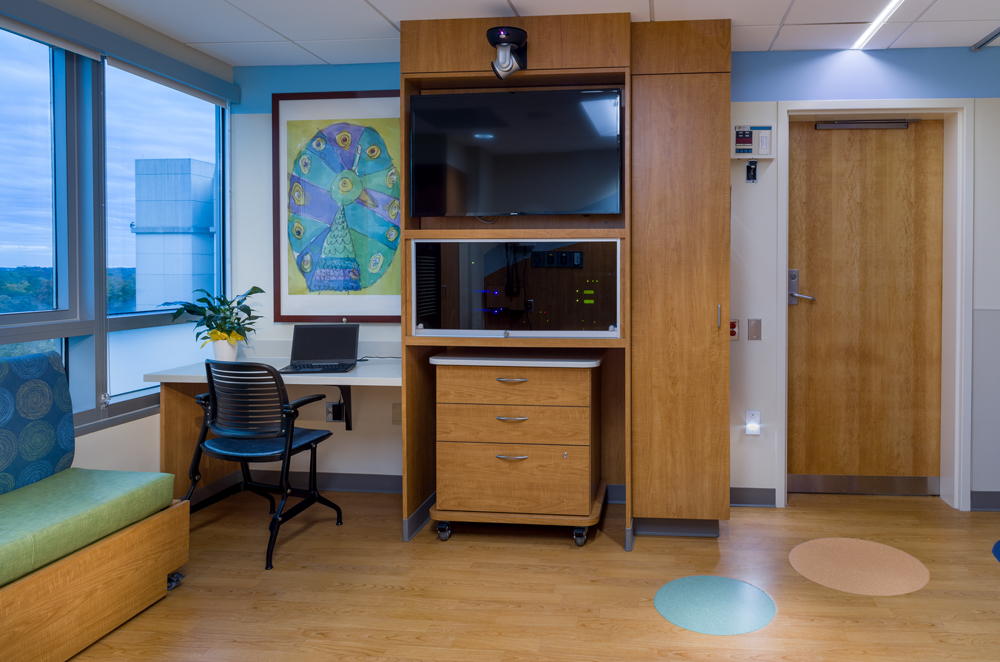
Making A Connection At Atrium Health Levine Children’s Hospital (HealthCare Design Magazine)
Originally published in HealthCare Design Magazine
Young patients undergoing metaiodobenzylguanidine (MIBG) treatment for neuroblastoma, a rare and deadly cancer that affects about 750 children a year, face long periods of isolation as the treatment makes patients’ bodily fluids radioactive, meaning caregivers and parents can spend only five minute per day in their room. Additionally, the treatment requires specialized rooms that need to be lined with 1 inch of lead brick shielding around all four walls and at the floor level.

Because not every facility has the budget or space to accommodate the specialized design, many families are forced to travel away from home to find a treatment facility—a reality faced by the Santos family when their daughter Isabella was diagnosed with the disease at age 2. She endured five relapses with the disease before she passed away at age 7 in 2012. Following her death, the family created the Isabella Santos Foundation and donated $1 million to Atrium Health Levine Children’s Hospital in Charlotte, N.C., to build the city’s first MIGB therapy suite.
Working with Little (Charlotte), the hospital decided to turn two side-by-side patient rooms on the 11th floor pediatric oncology unit into a 244-square-foot MIBG room and a 250-square-foot parent room. A nearby storage room was converted into the Hot Lab, where the treatment is prepared. “Proximity to the Hot Lab reduces travel time to the patient and the risk of radiation exposure to others,” says Roger Wilkerson, healthcare practice leader at Little.
To address the isolation of the treatment as well as the need to provide constant patient monitoring, a lead-line window and door were added between the rooms to visibly and physically connect the two spaces, with all access to the patient room coming through the parent room. “It allows the parent to see the child when they cannot physically be in the room,” Wilkerson says. Additionally, the rooms are connected by an AV system, which allows caregivers to see, talk, and play games with the child.




